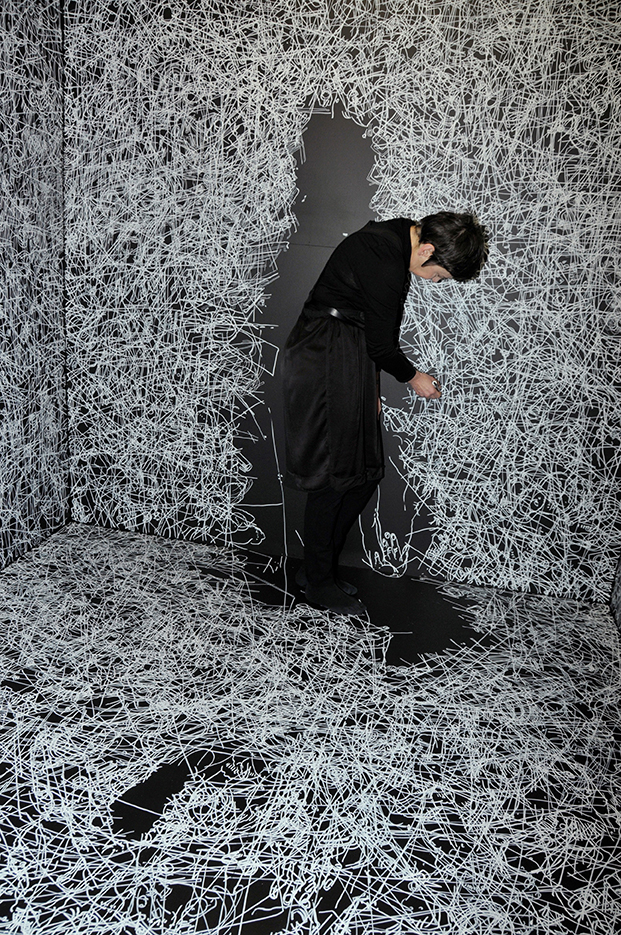Gosia Wlodarczak: FOUND IN TRANSLATION
In 2013, between 10.30 am and 5 pm daily for 17 days, Gosia Wlodarczak was enclosed in a specially designed sensory limitation cube in RMIT Gallery, Melbourne, drawing without any exposure to the outside world. The project, entitled A Room Without A View, 2013, used the language of drawing to explore the artist’s imagination within solitary confinement. Living inside the drawing, the artist would depict aspects of her own body and elements of the room itself, always concentrating intently on the physical environment.
When invited to exhibit in TarraWarra Museum of Art’s North gallery, with its spectacular view of Long Gully, Wlodarczak immediately suggested that A Room Without A View be deconstructed, transforming her solitary container into a kind of architectural plan. One panel is missing, acknowledged through the gap between the panels on the floor, and on 6-8 February, 2015, the artist will perform a drawing on the Museum’s large window, as if in acknowledgement of this missing segment. A Room Without a View is exhibited in the Museum’s ‘room with a view’.
The artist has also created a large scale three-panel drawing employing an abstract alphabet derived from 29 small details taken from the A Room Without A View performance drawing. Each detail represents (respectively) the 26 letters of the English alphabet and three punctuation marks. This drawing responds to and visually translates a poem from Ian Fairweather’s The Drunken Buddha (1965), which is itself a translation of a well-known Chinese tale. There are two instructions for the work: Instruction for the Maker (a manual to reconstruct the drawing) and Instruction for the Viewer (a key to decode the drawing and read the encoded poem).
Rather than perceiving the world as a fixed system, Wlodarczak displays an endless openness to an ever-fluctuating environment in which her forms and lines cluster and jostle into new combinations. Drawing on wood, window and canvas and embracing the imagery around her, this is a cosmology that is optimistic about the world-making activity of art.
